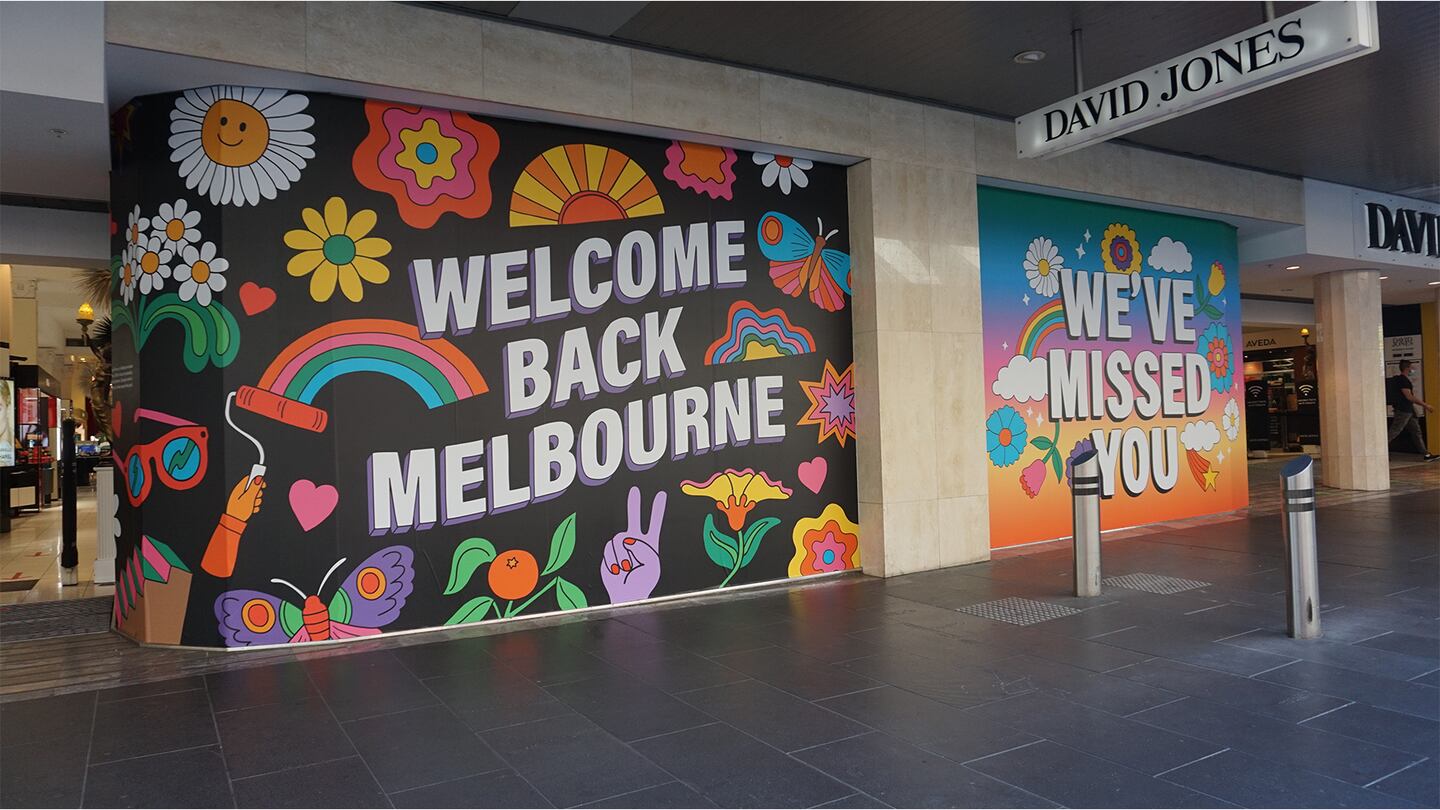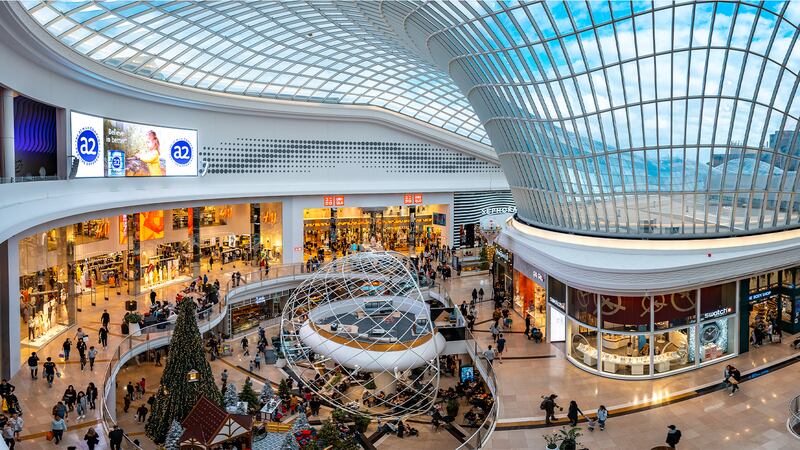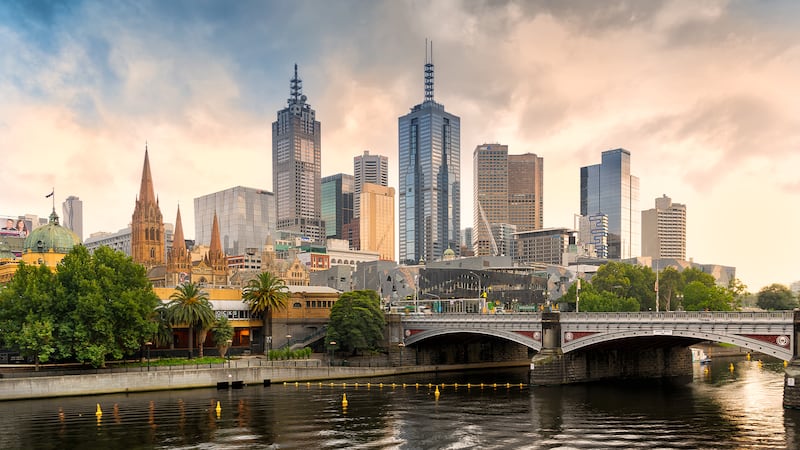
The Business of Fashion
Agenda-setting intelligence, analysis and advice for the global fashion community.

Agenda-setting intelligence, analysis and advice for the global fashion community.

Before the pandemic, Melbourne’s Collins Street Precinct was an asphalt runway for deep-pocketed international visitors on the hunt for Dior, Chanel, Hermès and Louis Vuitton in an area that conveniently provided them with sufficiently exotic landmarks to show their Instagram followers they were enjoying a spot of retail therapy abroad.
Lured by the city’s relaxed yet cosmopolitan lifestyle, as well as major events such as the Australian Open, The Formula One Grand Prix and the Melbourne Cup, the other major drawcard for wealthy tourists was hitting the boutiques at the top end of the strip referred to by locals as “the Paris end” of Collins Street.
But once Covid hit the boutiques were forced to close their doors and Melbourne, one of the world’s most liveable cities, endured one of the longest lockdowns, with more than 260 cumulative days under restrictions. Trade at the higher end of the Australian market was hit hard — as was retail across the board — but after nearly two years of disruption and strict international travel bans, businesses finally have something to celebrate.
With the reopening of Australia’s borders on Monday to international tourists vaccinated against coronavirus, some of the foreign shoppers who have traditionally been a boon to luxury retailers are now finally able to return.
ADVERTISEMENT
Opening the doors to tourists to capture pent-up demand
“Bring it on,” says Mary Poulakis, co-owner and managing director of Melbourne luxury department store Harrolds, noting that customers from South East Asia, America and Europe account for up to 15 percent of Harrold’s total sales. “International tourism is essential to the survival of retail in Australia and opening the borders is critical to us starting to make some sort of comeback.”

Tom Ford, Bottega Veneta, Burberry and Alexander McQueen are among the brands stocked by Harrolds, which has two department stores in Melbourne and another in Sydney. Poulakis made the decision to close the fourth, in Pacific Fair shopping centre on the Gold Coast, in 2021.
“We didn’t have the confidence at the time for international and domestic tourism to make a rebound,” she says.
The Australian Retailers Association (ARA), says reopening international borders will benefit luxury retailers such as Poulakis, who are reliant on international shoppers and have experienced significant downturns since the pandemic hit.
“This has been a long time coming after more than 700 days of being cut off from the rest of the world,” says ARA chief executive Paul Zahra. “There’s been a sharp decline in foot traffic in our capital cities driven by the loss of international tourists and office workers, and opening us up to international visitors is the first and necessary step towards the revitalisation of our CBDs (central business districts).”
The move sends a strong signal to the rest of the world that Australia is finally open for business again, following a period in which the retail value of Australian personal luxury goods market dropped from US $5.7 billion in 2019 to $5.1 billion in 2020 according to Euromonitor International, a decline of more than 11 percent. In 2021, the value rose to $5.3 billion but the firm does not forecast a full recovery until 2023 when the sector is expected to reach $5.8 billion.
In the year ahead, analysts at Fitch Solutions predict “a positive outlook for the luxury sector in Australia, with some caveats and risks.” Brice Dunlop, principal consumer and retail industry analyst at the firm says that “this positive outlook is largely driven by a recovery and growth in disposable income levels, supporting a wider recovery and growth in consumer spending. The reopening of the borders will be a [further] boon to this.”
ADVERTISEMENT
Though some Australians did shift their shopping patterns from destinations abroad back to Australia due to travel restrictions during the pandemic, overall the repatriation of luxury spending has not compensated for the loss of global tourism.
“Australian tourists aren’t typically big spenders on luxury products, especially when you compare it to Chinese, Japanese, Singaporean and European consumers,” says Dunlop. “As such, the localisation of luxury spending is not that significant.”
According to Stuart Ayres, minister for tourism for New South Wales (NSW), the state where Sydney is located, “Covid-19 has had a dramatic impact on international tourism and the NSW government acknowledges the significant role retail tourism plays in our visitor economy.”
With the onset of Covid-19 and related travel restrictions, international tourism collapsed overnight in Australia. International arrivals were down 98.2 percent for the year ending September 2020, according to the Australian Government’s international visitor survey released a year later.
Australia’s income from international tourism, including the retail sector, was decimated between Mar. 2020 and Sep. 2021, recording losses of 62.5 billion Australian dollars (US $45 billion).
The decline in the country’s top five international visitor markets provide a snapshot of the severity of the situation, with Chinese visitor spend falling 99.4 percent, New Zealander visitor spend down 88.6 percent, US visitor spend falling 96.4 percent, UK visitor spend down 96.3 percent, and Japanese visitor spend down 99.3 percent.
Driven by the gradual return of domestic demand, a tentative recovery is underway for shopping centre giants like Vicinity Centres whose tenants span the luxury to high street segments of the market. The firm part-owns and manages Australia’s largest mall, Chadstone in Melbourne, and has other centres including Queen’s Plaza, in Brisbane, Queensland state, with luxury tenants including Dior, Gucci and Louis Vuitton.
Vicinity pivoted from a massive $394.1 million loss in the half-year to December 2020 to a $650.2 million profit in the half-year to December 2021, with the group’s chief executive Grant Kelley attributing the positive outlook to the return of “purposeful” shoppers who had “the confidence and the capacity to spend” after months of lockdowns in Victoria and New South Wales states, where Melbourne and Sydney are located respectively.
ADVERTISEMENT
Many overseas shoppers still can’t or won’t come
Retailers such as Poulakis are now waiting for international customers and their cash to flow back into the country. “We did whatever it took over the past few years, and now we’re looking for confidence and international visitors to return to the market,” she says.
Whether international tourists are ready and able to return to Australia, however, is another matter.
Even if tourist sentiment is sufficiently positive to attract shoppers back to Australian shores, outbound restrictions in their home countries could prevent them from doing so.

In recent weeks, cross-border travel restrictions have been loosened in countries including the Philippines, Indonesia, Malaysia, Thailand, and even in New Zealand, which, along with China, is one of the places that has had the strictest measures.
However, “in many cases, the changes are still too timid to make a big difference to tourism receipts,” Simon Baptist, chief economist of The Economist Intelligence Unit, wrote in a report on Feb. 18. “Europeans will find beaches closer to home rather than go through testing and insurance requirements of Southeast Asia’s beach resorts as they currently stand.”
Baptist’s assessment probably holds true of European, American and other long-haul travellers who might otherwise be keen to travel to Australia at this very tentative stage in the reopening of global tourism.
Crucially, the Chinese are still unable to travel, meaning their significant contribution to Australia’s luxury coffers remains on hold.
“As of yet, the Chinese government does not allow its citizens to travel, so this will continue to weigh considerably on any kind of recovery in luxury spending in Australia,” says Dunlop.
“We don’t believe the [luxury] sector will be able to recover to pre-Covid-19 levels without the spending by Chinese consumers. [But] Japanese and Singaporean consumers, especially women, will provide some relief for the sector as these are big spenders, often looking for more variety in product, which Australia offers,” he adds.
But their spend will not be spread equally, with the country’s most popular tourist destinations Sydney, Melbourne and Brisbane receiving the lion’s share. Western Australia, where Perth is located, currently remains closed to international visitors despite the federal government’s move to reopen borders this week.
While we expect luxury retailers to get a bounce from the border reopening, it will not be an immediate snap back to the way things were.
“It’s important that the states and territories are aligned in their approach to managing overseas arrivals and Western Australia remains a roadblock to our global positioning,” says Zahra. “We’re going to repel tourists if they have to go into quarantine for several days.”
While Zahra welcomes the broader reopening of Australia’s borders, he cautions high-end retailers against expecting any quick fix after two years of pain.
“We need to be mindful that the return of international tourists isn’t a silver bullet solution,” he says. “It will take years for international travel patterns to return to anywhere near pre-pandemic levels. So, while we expect luxury retailers to get a bounce from the border reopening, it will not be an immediate snap back to the way things were.”
In the meantime, retailers like Parlour X are simply focusing on what they do best.
“We’re thrilled to welcome back familiar faces to the boutique, both internationals and locals, with what will hopefully be a recovering economy ahead,” says Eva Galambos, owner of the Sydney boutique.
Doing more to serve the local customer in the interim
The collapse of global tourism forced luxury retailers to pivot and focus instead on growing the local market.
“With more money to spend from not travelling, we saw customers embrace luxury goods,” says Bridget Veals, general manager of womenswear, footwear and accessories at Australian department store chain David Jones, which has over 40 stores across the country and carries brands including Celine, Chanel, Balmain and Givenchy.
For top tier customers, David Jones relied on digital solutions with personal shoppers during lockdown.
“Our [Australian] luxury customers still wanted that personalised interaction which when stores were closed, which we made available via video calls. And when our stores were open, we saw our customers coming into store more informed and prepared to spend due to having spent more time researching at home online,” Veals adds.
Earlier this month, the retailer launched its autumn-winter campaign, Wonderworld, aimed at inspiring locals to continue to shop locally even as some resume international travel.
I think it will still be a bumpy ride but we’re still here and we’re starting to make some kind of comeback.
Online sales were a lifeline for luxury retailers including Parlour X which implemented a marketing strategy to distinguish its e-commerce store from international competitors such as Net-a-Porter, Farfetch and Matchesfashion.com.
“We had to re-establish our relationships with customers and hone in on what our point of difference was with our offering,” says Galambos, who stocks the likes of Balenciaga, Loewe, Lanvin and Sacai at Parlour X.
“We focused on the fact that because we were local we could do same day deliveries and have someone available 24/7 who people could talk to. There are so many international competitors so this was an opportunity to claim back some of our territory, and we actually found Australian consumers wanted to support a business in their own country. For the first time that really seemed to matter to them.”
Poulakis hand-delivered flowers and champagne to clients during lockdown, as well as pouring “a couple million dollars” into marketing efforts, inventory systems and revamping the Harrolds website.
With analysts predicting that Australia’s personal luxury goods market won’t return to pre-pandemic levels until next year, and many wealthy tourists still unable or unwilling to travel to the country to shop despite this week’s reopening of international borders, retailers will have to continue pulling out all the stops to entice locals to keep spending.
“I think it will still be a bumpy ride, but we’re still here and we’re starting to make some kind of comeback,” says Poulakis.
This week’s round-up of global markets fashion business news also features Korean shopping app Ably, Kenya’s second-hand clothing trade and the EU’s bid to curb forced labour in Chinese cotton.
From Viviano Sue to Soshi Otsuki, a new generation of Tokyo-based designers are preparing to make their international breakthrough.
This week’s round-up of global markets fashion business news also features Latin American mall giants, Nigerian craft entrepreneurs and the mixed picture of China’s luxury market.
Resourceful leaders are turning to creative contingency plans in the face of a national energy crisis, crumbling infrastructure, economic stagnation and social unrest.